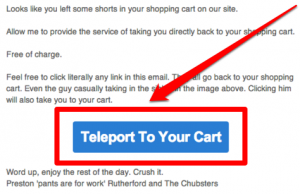In the midst of the holiday season in December 2011, retailers around the world watched in horror as Best Buy told customers they didn’t have enough stock and had to cancel orders. Needless to say, the incident destroyed the company’s reputation and Best Buy never quite recovered.
For small business owners, the stakes are even higher—you don’t want to overstock and mismanage inventory, yet you also don’t want to lose out on increased opportunities and profits. The holiday season can often account for almost 20% of annual sales, but the surge in revenue also comes with a lot of challenges.
With the holidays right around the corner, below are 7 ways successful businesses get their inventory ready for peak sales and business growth:
- Prepare your holiday strategy in advance
According to the National Retail Federation, 40% of customers begin researching and doing their holiday shopping as early as October. This means whatever you do, do not wait until the holidays to know how you’ll tackle the busiest days of the year. Many retailers spend the “lazy summer months” to prepare for the busy times ahead. This can include marketing posts to spread the message of upcoming sales months in advance. Below, A.J. Agrawal, CEO of Alumnify suggests in Inc. a timeline of how to properly prep for the holidays a year in advance:
- January through April: “Prepare your products by adding new inventory, testing pricing strategies, and identifying your offseason peak periods,” he advises.
- May through August: Prepare and implement a proper inventory management system.
- September through December: This is the time you “sell, sell, sell,” says Agrawal.
- Ramp up on inventory strategically
The last thing you want to do is run out of inventory when people are racing to get gifts for their friends and loved ones. Make sure to stock up so that you can deliver when the demand calls. But how do you anticipate demand? And how do you make sure you’re not dangerously overstocking and slashing profit margins?
Finding the right balance can be tricky. The best way to navigate this is to inspect your sales data from previous years to determine which items to stock up on. Derek O’Carroll, CEO of Brightpearl, suggests in this post that the best way to avoid stock outs is to “dedicate some time out of your busy day to have a quick check of your stock levels to monitor best sellers and keep an eye on what needs reordering.”
If you want even more accuracy, consider running a focus group to see which products customers like most. You can then adjust inventory and marketing accordingly.
- Organize your warehouse
Without a properly organized warehouse, it doesn’t matter how strategic you are at forecasting sales. During the busy holiday season, the last thing you want to be doing is tracking down inventory. Consider an effective inventory management system, like barcode labeling. With a proper system in place, you don’t even need to spend a lot of time organizing or tidying up your storage space, or warehouse. Consider Amazon’s chaotic storage system, where they use every inch of physical space. There’s no categorization—just a sophisticated, automatic database system where every product is scanned with barcodes and placed on shelves with matching barcodes. When the item is needed, tracking it down is quick and simple. Amazon is also able to monitor each item that comes through its warehouse, and doesn’t have to spend a lot of time training employees on where products are placed.
- Strategize your pricing
You might want to consider different price points during the holidays as people tend to have a variety of gifts they’re shopping for. After years of experiencing the holiday rush, Aja Apa-Soura, an artist who sells her work on Etsy, realized she was ignoring a huge demographic of customers by not selling any paintings under $ 100. Now, she makes sure she taps into different price points.
- Think about packing, shipping and pick-up
E-commerce is everything today—and many of your customers will be last minute shoppers who need their orders in time for the holidays. Consider offering expedited shipping—and explore shipping to other regions. Make sure whatever you offer, the process is efficient so when the holidays approach and orders are rushing in, you’ll know how to handle it
You can also offer in-store pickups, suggests Rodney Mason, chief marketing officer of Parago, as this is convenient for customers and the higher foot traffic can also “increase the likelihood of incremental purchasing.”
- Plan your marketing and advertising tactics
Don’t get so busy that you forget to make time for social media engagements. Post regular updates to spread awareness. Sonu Agarwal, founder of startupme.me suggests on Quora that business owners do the following marketing tactics to prepare for the upcoming holidays:
- “Perform keyword research to identify any relevant holiday-specific search terms for your market e.g.holiday gifts for kids, kids Christmas gifts, unique holiday gifts for kids, etc. Weave these keywords into your new/updated holiday copy on your PDPs and category pages,” she writes.
- If you haven’t done so already, create a holiday gift section or category on your site. For instance, have a “For Her” of “Gifts under $ 50” section which makes it easier for shoppers to find what they need. Check out this example from Macy’s last year:

- Keep an eye on your online ratings
Make sure your online reviews are in good shape and has good SEO so customers can find your site. According to Amazon’s advice to its sellers, 0-2 percent negative feedback is great, but if this exceeds to 5 percent, it’s time to “review your business practices to correct any operational problems that might affect a buyer’s experience.” Also, don’t forget to reply to negative feedback when they do happen to resolve issues as quickly as possible.
- Brace yourself for post-holiday sales and returns
Be prepared for returns as buyers change their mind after the holidays. Make sure you have a process in place to get those items back in the system. Consider post-holiday sales to get rid of excess purchases, but make sure you plan for all of this ahead of time. The best time for a clearance sale is after the holidays and right before the new year. You can start with a specific percentage markdown and monitor all your items so you can continue to aggressively lower prices until everything is sold.
Business & Finance Articles on Business 2 Community(90)




